- News
- Reviews
- Bikes
- Accessories
- Accessories - misc
- Computer mounts
- Bags
- Bar ends
- Bike bags & cases
- Bottle cages
- Bottles
- Cameras
- Car racks
- Child seats
- Computers
- Glasses
- GPS units
- Helmets
- Lights - front
- Lights - rear
- Lights - sets
- Locks
- Mirrors
- Mudguards
- Racks
- Pumps & CO2 inflators
- Puncture kits
- Reflectives
- Smart watches
- Stands and racks
- Trailers
- Clothing
- Components
- Bar tape & grips
- Bottom brackets
- Brake & gear cables
- Brake & STI levers
- Brake pads & spares
- Brakes
- Cassettes & freewheels
- Chains
- Chainsets & chainrings
- Derailleurs - front
- Derailleurs - rear
- Forks
- Gear levers & shifters
- Groupsets
- Handlebars & extensions
- Headsets
- Hubs
- Inner tubes
- Pedals
- Quick releases & skewers
- Saddles
- Seatposts
- Stems
- Wheels
- Tyres
- Health, fitness and nutrition
- Tools and workshop
- Miscellaneous
- Tubeless valves
- Buyers Guides
- Features
- Forum
- Recommends
- Podcast
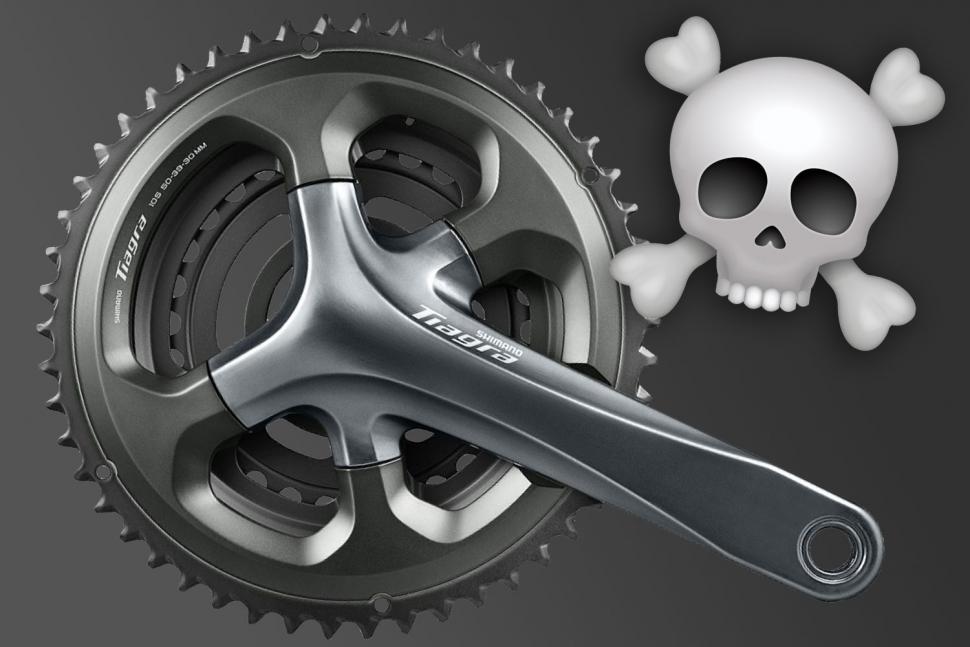 The death of the triple chainset August 2018
The death of the triple chainset August 2018Are we seeing the death of the triple chainset?
Triple ring chainsets have fallen out of fashion in recent years, but are they threatened with extinction?
Modern road bikes can come with any one of a number of different types of chainset fitted as standard - there's standard, compact and semi-compact chainsets for starters. But just because your bike came fitted with a certain type of chainset doesn't necessarily mean it's the right one for you.
We asked SRAM, Shimano and Campagnolo if they feel that the triple chainsets days are numbered. Here are their replies:
Campagnolo
Campagnolo hasn't introduced any new triple chainsets since 2012, but their Athena 11-speed, and Centaur and Veloce 10-speed triples are still available.
Campagnolo told us:
While most athletes are covered by the gearing offered by compact chainsets and larger cassettes, there are still a faithful few who are quite keen to use the triple. Several requests from areas in France, Belgium and Canada strangely enough.
However, with the advantages of the compact crankset and a movement towards larger tooth count cassettes we believe that those wishing to run a triple ring crankset will diminish further as they will adopt increasingly more often the two chainring solution. At the moment we still offer the triple.
SRAM
As we mentioned above, SRAM has never bothered with road bike triples, and in recent years has been promoting single-chainring gear systems as the ultimate in simplicity even for racing. What they had to say about triples isn't very surprising then:
Is the triple chainset dead?
Dead & buried.
Where do you see the future of modern road bike chainsets?
There’s a bright future for 1x. Simpler, quieter, more secure. Current cassette options allow gear range for most cycling disciplines. 1x even provides a more aerodynamic drivetrain for TT and triathlon. 2x remains dominant, of course, because it can provide the widest gear range and closer gear ratio steps.
Shimano
You could once get a Dura-Ace triple chainset if you were building a very posh pass-stormer, but no more. As its top-end groupsets switched from 10 to 11 sprockets, Shimano quietly dropped triples.
Shimano told us:
Within Shimano's current road line up triple chainsets are more common at Tiagra level and below. These groupsets attract a wider audience/riding style and therefore the demands on the components are different to those favoured by competitive and performance cyclists.
Triple chainsets have closer gear ratios, making the steps between the gears easier to move through, and therefore increasing the efficiency of personal performance. For many riders, a triple chainset provides options to allow you to continue cycling in many circumstances/conditions.
However, at the competitive end of cycling, trends for many years have been in favour of double chainsets. Wider cassette ratios are now able to cover the vast majority of gear ranges, in combination with lower crankset weight values that performance athletes demand.
Which chainset is right for you?
So if the triple is dead, what are your common choices? Let's go through the main road systems to help you find the right one for you.
53/39 'Standard' or racing set-up
Ideal for: Pros, strong riders, or flat conditions (maybe a bit more than that but you get my drift)
50/34 'Compact'
Ideal for: Most people, good all-rounder ideally suited to hilly conditions
52/36 'Semi-compact'
Ideal for: Increasingly pros, but also the rest of us mortals too, strong all rounder, ideal for hilly conditions, paired with 11-32 cassette should get most people up even the biggest mountains.
48/32 and 46/30 'Sub-compact'
Ideal for: Touring, gravel and adventure bikes, it takes the existing idea of the compact chainset a step further, yielding gearing that’s ideal for bikes used across a range of surfaces and terrains
1x11 single chainring
Ideal for: Cyclocross, gravel and adventure riding. The single ring and wide-range (10-42t) cassette provides much of the range of a compact and shifting simplicity along with increased mud and ground clearance
- Read more: Which chainset is right for you?
The compact killed the triple
Gearing options have increased substantially over the years with the advent of the compact chainset the biggest reason for the demise of the triple. The arrival of the compact immediately sparked debate surrounding the death of the triple chainset, and they’re now much less noticeable in any of the big three groupset manufacturers - SRAM, Shimano and Campagnolo - ranges than they used to be.
Before the compact came along, your crankset choice was largely split between a double for racing and a triple for touring and Audax riding. At this time of limited choice, a triple was appealing for any non-racing applications, particularly touring or Audax bikes laden with luggage, the lower gears helping to spin up the climbs.
The new wave of sportive bikes sparked the development for a chainset that offered most of the range of the triple but with better chainline, lower weight and, arguably, better looks on a sporty carbon bike.
- Struggling on the hills? If you need lower gears to make climbing easier, here's how to get them
The compact was an instant success. Popularised by FSA soon after the turn of the century, the company met these sportive bike requirements and when paired with the increased range of the 10-speed cassettes introduced at roughly the same time, provided most of the same low gearing as a typical triple setup.
A triple does offer a wide range of gears, but there is a lot of duplication. A 50/34 compact with a 12-29 11-speed cassette provided minimal difference in range from a 53/42/30 triple with a 13-29 cassette. The small compromise in reduced gear choices and range was compensated by reduced less gear duplication, lower groupset system weight and a narrow Q-factor.
Compacts were even used in professional races too, Tyler Hamilton using a compact on a mountain stage of the 2003 Tour de France. The fate of the triple for the new breed of performance focused sportive bikes and cyclists was sealed forever.
The chainset evolution
The evolution of the chainset and the reduction of the number of rings has been helped by the growing cassette range and increased gears of each subsequent groupset release. Back in the day, you’d be lucky with a 6-speed, 11-23 cassette, fine for racers, but the only way to get low gears without huge gaps — for touring, Audax or leisure cycling — was to fit a triple chainset.
With the advent of 9, 10 and 11-speed groupsets and an increased cassette range, with 11-30 and 11-34 now common options, there’s less need for a triple chainset. You can now get a wide spread of ratios with less duplication of gears.
A triple chainset is essentially a double with a smaller chainring bolted on. Triple chainsets require special front derailleurs and shifters, along with a matching long cage rear derailleur to accommodate the long chain needed to cover the full range of sprocket options. Reducing the need for specific components was a boon to manufacturers as it tidied up product lines.
And so they fell out of favour with manufacturers. Shimano and Campagnolo wasted no time dropping triples from their top-end ranges, Dura-Ace and Record respectively, replacing them with new compacts. SRAM didn’t even make a triple chainset when it first got into the road bike groupset market, and has been a proponent of the single ring drivetrain.
Now there are an increasing array of options. The semi-compact (52/36t) has been a hit, popular with racers and performance minded cyclists, and some reckon it even threatens the compact.
More recent is the sub-compact (48/32 and 46/30) for adventure and touring cyclists where lower gears for tackling hillier terrain with heavier bikes are required. With a 46/30 and an 11-34 cassette you're looking at the kind of gear range that used to be only easily achieved with a triple, and it's possible to go even wider and lower if you bend the rules a bit.
- First look: Does the Praxis Works Alba 48/32 herald the era of the sub-compact chainset?
Add to the mix too SRAM’s 1x11 approach, which pairs a single chainring with a super wide-range cassette, and it looks like the triple chainset has been pushed to the very fringes of cycling.
Do you think the triple is dead or is there still a place for it?
David worked on the road.cc tech team from 2012-2020. Previously he was editor of Bikemagic.com and before that staff writer at RCUK. He's a seasoned cyclist of all disciplines, from road to mountain biking, touring to cyclo-cross, he only wishes he had time to ride them all. He's mildly competitive, though he'll never admit it, and is a frequent road racer but is too lazy to do really well. He currently resides in the Cotswolds, and you can now find him over on his own YouTube channel David Arthur - Just Ride Bikes.
Latest Comments
- chrisonabike 3 sec ago
The exact situation shown in this photo is pretty common near me....
- levestane 6 min 46 sec ago
https://www.youtube.com/watch?v=hyhz4q-5NKA gives some options.
- brooksby 1 hour 1 min ago
Nope - had an urgent appointment with his tax advisor
- brooksby 1 hour 5 min ago
I'm not sure which one of them looks more like a crook…
- OnYerBike 1 hour 38 min ago
It might not be Miche-specific, but across all the thru-axle, disc brake wheelsets in my household (including Hope, DT Swiss and Bitex hubs), none...
- S.E. 3 hours 49 min ago
That made me think of that "Hot Fuzz" comedy movie... so many truths in it.
- Rendel Harris 5 hours 42 min ago
Good to see a V-brake option available for all those people who ride Cosmic Elites with V-brakes...seriously, you must know really that the answer...
- mattw 6 hours 20 min ago
Get thyself over to Buildhub - a community owned forum where I am on the moderation team ("Ferdinand") which is about self-build and renovation....
- Destroyer666 16 hours 23 min ago
Nonono, not those, but those that have constructed Italian cars and motorcycles that have been driven to hundreds of race and championship...
- RoubaixCube 16 hours 32 min ago
This may well be the case although Im unaware of the brands popularity on their home turf. I used to see them being advertised more in the UK...
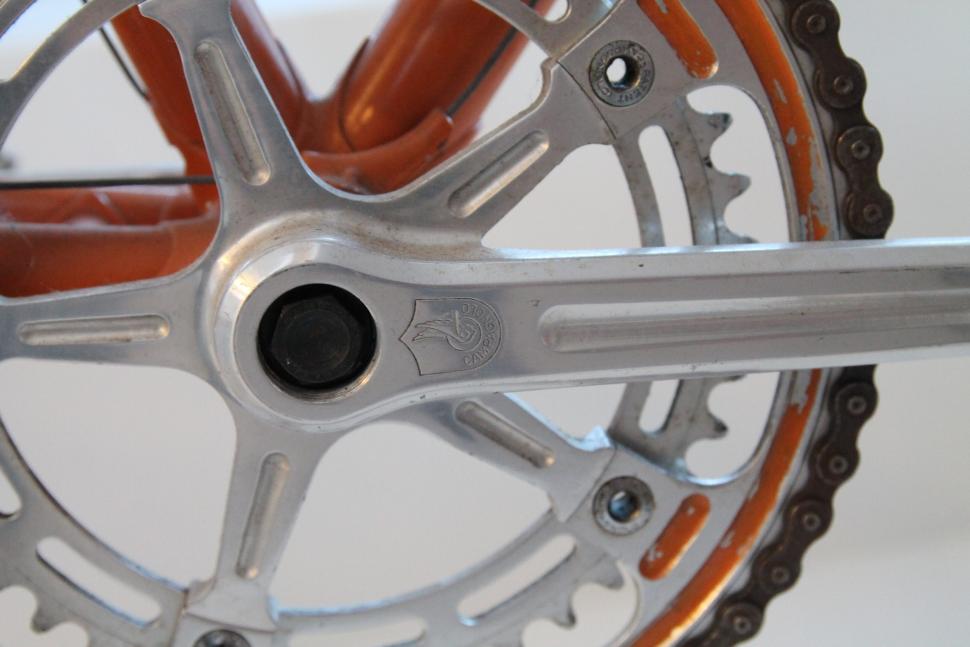
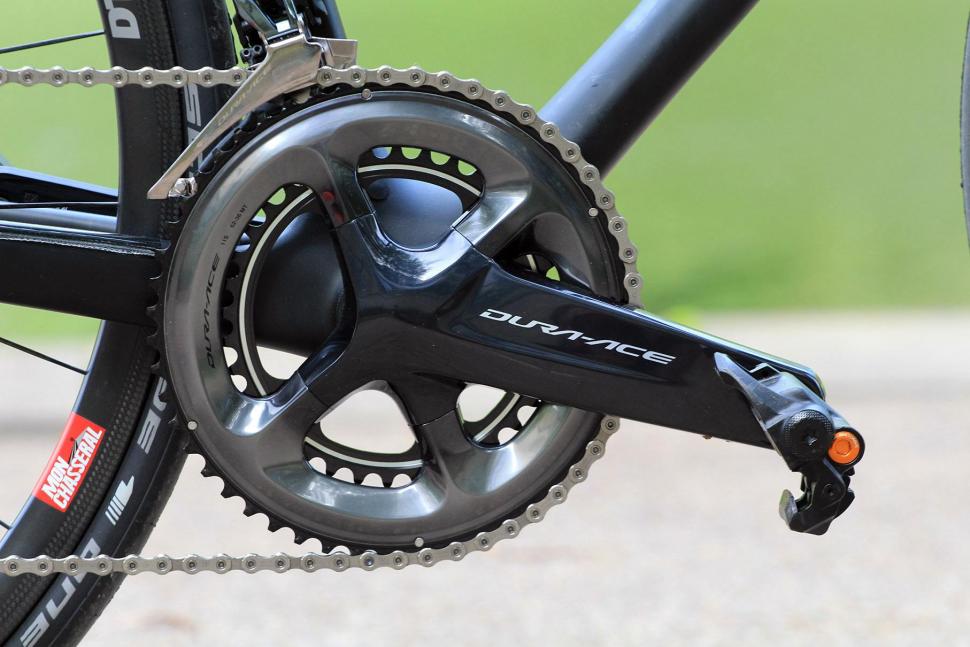
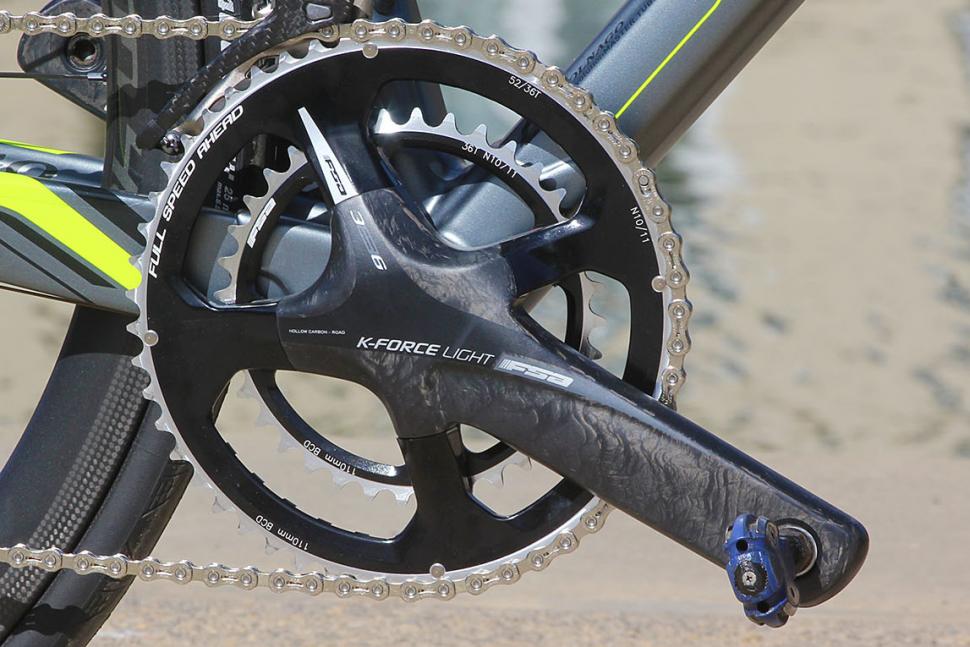
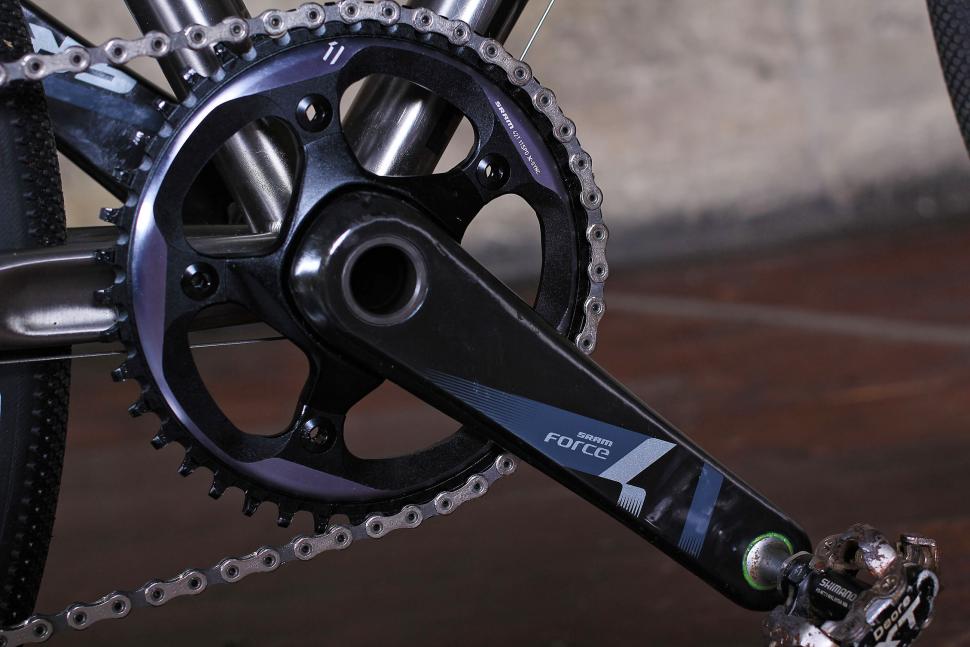
Add new comment
128 comments
[/quote]
Anyway, the key bit for Triple fans is to buy the things and prove there's still a market. If shops can't shift the stock they'll stop ordering it, and if it isn't ordered the manufacurers will stop making it in their current ranges and won't design it in their future ranges.
[/quote]
That's the equivalent of banks telling us there is no call for them on the high street as people aren't using them (they aren't there anymore)
Maybe when the kids that run SRAM hit middle age they will sing the praises of triples.
Tulio's best invention.
Same here...touring in the mountains just wouldn't be the same without a triple. Shifts beautifully with Tiagra shifters and front mech, and XT rear mech.
In use:
90 rpm in top gear (48/11) is 32 mph Of course I could ditch the outer ring, but mountain descents just would be dull.
Of course I could ditch the outer ring, but mountain descents just would be dull.
Pefect. Awed. Thank you. My touring bike - loaded with only 2 paniers, incl. the tent, toolkit and spares, only 2 litres of water in bottles, crawled up Grand Colombier with a 34-50 compact and a 11-34 on the back. I learnt my lesson (and strained my achilles'). I now have a triple: 26-39-50 on the front, and the same 11-34 on the back. Yes there's a lot of overlap, but in the 27 gears plenty of sweet spots. No 1x11 MTB type gearing is going to give me that, Mr SRAM.
Maybe triples will die....but not because of gearing options but because of E-bikes. I'm sure as batteries get smaller then we'll probably see 1x groupsets with battery power for the less able. Hell, with 250w extra on tap I'd happily run 53/39 .
Compact over triple? Never. I've tried a compact on 3 seperate occasions, hated it every time, too many big jumps in gears from end to end. Have now settled on an excellent solution for all bar my race bikes: Campag triple, with 53/39/30 rings. Matches my double chainset race bikes, but with the ability to spin away like a food blender up hills. Living in Scotland these days that's very welcome.
A rare sight indeed these days.... a compact chain-set is lighter, more efficient, easier to set up and maintain and should get you up most things with an appropriate cassette
if u need a 11-40 or 11-42 to get by with your double +50/34 any tripple will be lighter.
Pages